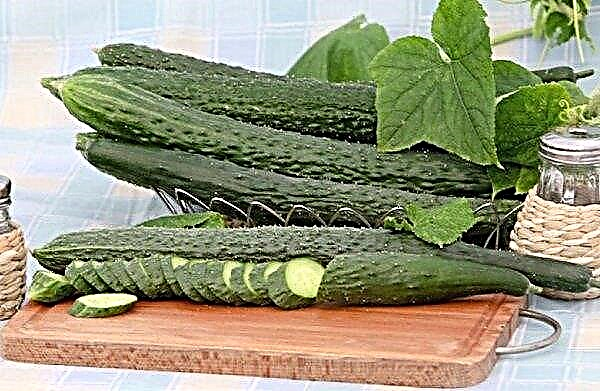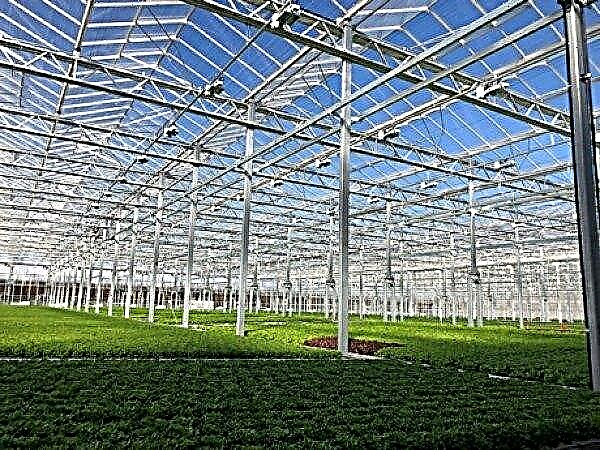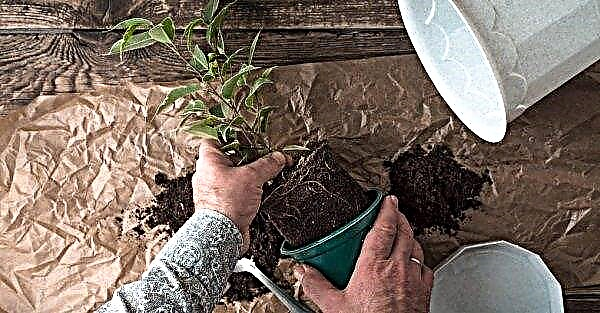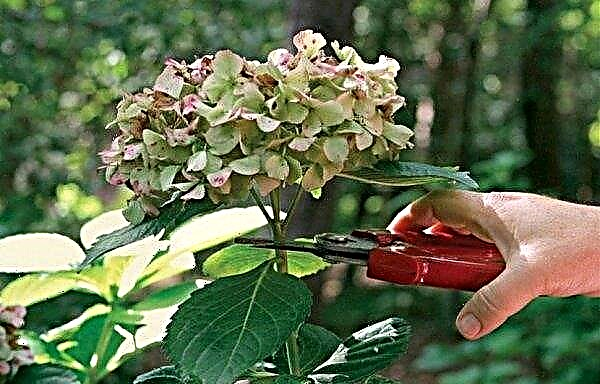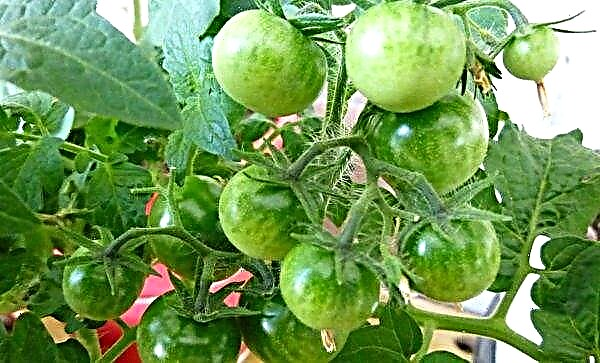One of the most common fungal diseases affecting cucumber culture is fusariosis. What measures to take to prevent and treat it in greenhouses or open ground, read below.
What is the disease dangerous for cucumbers?
Infection with fungal pathogens often occurs through the soil. Fusarium affects the vessels located inside the shoots, which leads to a slowdown in growth. The younger the plants, the more harm it does to them.
Did you know? The Slavs used alkali as soap - wood ash steamed in boiling water.
With timely treatment, the problem can be eliminated, but, unfortunately, it becomes noticeable not at the seedling stage, but when the plants enter the flowering phase. The main danger is that infected specimens begin to massively wither and die in the fruiting stage.

In infected specimens, immunity is reduced, as a result of which they become more susceptible to other infections and bacteria. In this state, cucumbers are often affected by bacterial wilting.
This disease appears in plants with reduced immunity and is not treated. In addition, weakened cucumbers are more often attacked by pests. As a result of such difficulties, losses can be up to 70%.
Causes and symptoms of occurrence
The causative agents of the disease are the fungi of the strain Fusarium. The disease is widespread everywhere. It mainly affects crops grown in the greenhouse. In open ground is less common. The fungus is transferred through the soil, where it gets along with the remains of vegetation or with water from reservoirs (if it is irrigated).

Spores are able to remain viable at sub-zero temperatures. The main reason for the defeat of cucumbers by Fusarium is the failure to comply with the rules of agricultural technology when growing crops. Spores can also spread in the wind.
In addition, the reasons that contribute to the propagation of harmful microorganisms are:
- crop rotation failure;
- the acquisition of poor-quality seed material from the hands already infected with Fusarium infection;
- acidification or alkalization of the soil;
- the presence of microcracks on the root system or terrestrial part of plants;
- nutritional deficiencies;
- fluctuations in temperature and humidity of the environment and soil;
- parasite attack - they are able to tolerate spores of the fungus on their body.
Did you know? According to the botanical classification, cucumber is a pumpkin.
Spores of the fungus begin to sharply increase their numbers at temperatures from +18 to + 25 ° C and relative humidity of air and soil over 70%.

Symptomatic picture of infection with Fusarium infection:
- When affected by fungal spores at the stage of seed germination, rotting of the sprouts is observed, germination is reduced.
- At the seedling stage, signs of root rot may appear. However, in most cases, at this stage, the disease does not manifest itself.
- Adult plants after transplantation wither in the daytime, restore turgor at night and look normal by morning. Only the upper part of the bush begins to fade.
- The older the plant becomes, the stronger it dies. Vegetation ends much earlier.
- With a strong infection, cucumbers suddenly turn yellow and dry.
- Fruits that have formed on infected specimens have a strong bitterness.

Ways to fight
Treatment of fusarium is carried out using drugs of biological and chemical origin or alternative methods. Therapy is selected depending on the intensity of the damage to the plants and their response to the funds.
Often, chemical protection is combined with folk remedies in order to increase the effectiveness of exposure to harmful microorganisms and enrich plants with nutrients.
Biological products
This group of drugs is safe for the environment and humans, but is not always effective at the stages of severe damage.
Important! Biological products can be used not only at the stage of infection, but also to prevent the disease. It is advisable to carry out spraying throughout the growing season, starting from the stage of sowing and germination of seeds.
The most effective among these tools:
| Drug name | Dosage and administration |
| Bactofit | 20 ml / 10 l of spray water per sheet (treat on both sides), only 7-8 treatments every 7 days, does not cause resistance |
| Fitosporin | 10 g / 5 l of water for spraying according to the sheet, the multiplicity of treatments - 3, with an interval of 10 days |
| Trichodermin | 20 g / 5 l of water for spraying throughout the entire growing season with an interval of 7 days, stop processing 21 days before harvesting |
The listed preparations are not compatible with chemical fungicides.
Video: cucumber fusarium
Chemical
Of the chemicals for the treatment of fusarium, "Fundazole" is used. On 10 l of water add 10 g of the product. The solution is sufficient for spraying on a sheet and soil per 100 m². In total, 2 treatments are carried out with an interval of 20 days. The last spraying should be carried out no later than 1 month before harvesting.
When using a fungicide, you must strictly follow the instructions and observe your own safety measures. Chemical protection should be used only until the formation of the ovary. At a later date, the risk of poisoning when consuming products increases.
Folk remedies
Check out more

An effective tool is wood ash. All plants and the soil around them are dusted with ashes. Such treatments can be carried out throughout the season.
They not only contribute to the elimination of harmful microflora, but also enrich the plant tissues, as well as the soil with potassium and phosphorus. This helps to increase immunity and improve the quality of the fruit.
Prevention methods
Fusarium spreads very quickly, so the main forces should be directed to its prevention.

Preventive measures primarily imply the fulfillment of all the rules of agricultural technology:
- Compliance with crop rotation - do not plant cucumbers for several years in a row at the same place, as well as after potatoes, tomatoes, peppers and eggplants.
- The plot in the garden and in the greenhouse needs to be prepared in the fall - the main task is to destroy the microflora in which the fungus lives. This can be done through deep cultivation of the soil (20-30 cm). It must be carried out at least 2 times. Between the digs, one of the biological preparations or a 3% solution of copper sulfate, as well as nitrogen-containing fertilizers (6 tbsp. L. Nitrophoski or 20 kg of fresh manure per 1 m²) are introduced into the soil.
- If there was an outbreak of fusarium in the greenhouse, then the top 20 cm of soil should be replaced with a mixture of peat, sand and humus (1: 1: 1). In such cases, all walls and the roof are treated with copper sulfate.
- Soil acidity control is an optimal indicator of 5–7 pH. At higher rates, for every 1 m² in the autumn, instead of nitrogenous fertilizers, 600 g of wood ash or 400 g of dolomite flour are added.
- Plantings of cucumbers, especially those cultivated in greenhouse conditions, should not be thickened. Between the rows a distance of at least 60 cm should be maintained, between plants - 50 cm.
- Compliance with watering regime.
- Timely application of fertilizers in accordance with the phases of plant vegetation.
- Weeding and loosening the soil after each wetting.
- Timely eating fruits.
One of the effective methods for preserving the crop is the choice of a variety that is genetically resistant to fusarium. Among early-ripening self-pollinated hybrids, such a feature is distinguished: Bunny, Zhukovsky, Hector. For open ground, you can take bee pollinators: Sudar, Dolomite, Christina.Important! With frequent outbreaks of fusarium in neighboring areas, it is advisable to carry out the soil treatment with Fundazol before planting seedlings. Its components disintegrate in the soil for 3-6 months, so the plants will be well protected.
Fusariosis refers to a disease caused by a fungus. Most often manifests itself in high humidity in conjunction with temperature fluctuations. Due to the ability of the spores to spread rapidly, all the forces of the gardener should be aimed at preventing such a problem.




